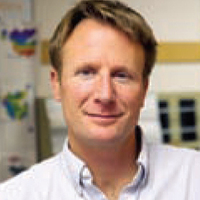The Arctic water cycle in a warming climate
Jones Seminar: Dr. Karl Kreutz, Professor, Climate Change Institute and School of Earth and Climate Sciences, University of Maine
The Arctic is expected to have one of the highest global increases in precipitation under a warming climate and enhanced poleward moisture transport is often cited as a cause. Recent modeling and observational studies find that a significant proportion of the precipitation increase may be linked to retreating Arctic sea ice, which enhances evaporation and intensifies the Arctic hydrological cycle. Additional observations on modern Arctic hydrology and past system behavior are critical for assessing model skill and testing these two hypotheses. To that end, I will present geophysical, chemical and physical parameters from an array of ice core projects in the North Pacific aimed at quantifying hydroclimate changes over the past several centuries. A new, 1200 year-long record of annual snow accumulation from Mt. Hunter (Denali National Park) shows a doubling of precipitation rate at the site since ~1850 AD, with recent values exceeding the variability observed over the past millennium. Most of the precipitation increase occurred in winter, consistent with seasonal ocean/atmosphere dynamics in the North Pacific. Analysis of melt layer stratigraphy implies a sixtyfold increase in total annual melt between 1850AD and today, corresponding to a summer warming rate of 1.92±0.31°C. The accumulation and melt records are significantly correlated with tropical Pacific sea surface temperatures, implying a tropical-extratropical teleconnection with influence on Arctic moisture and heat fluxes since at least the beginning of the Industrial Revolution. Our goal now is to extend these seasonally-resolved records throughout the Holocene in both the North Pacific and Greenland regions, to evaluate hydroclimate and sea ice conditions during the Holocene Thermal Maximum (~5,000 to 9,000 years ago). I will also discuss new results and prospects for estimating ice extent during previous warm intervals (e.g., Pleistocene interglacials) in the Arctic, using basal ice, subglacial sediments, and subglacial bedrock.
